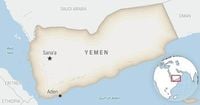Internet users across Asia and the Middle East were hit by widespread outages this weekend after critical subsea cable systems in the Red Sea suffered damage near Jeddah, Saudi Arabia. The disruptions, which began affecting connectivity on September 7 and 8, 2025, have highlighted the fragility of the global digital infrastructure that so much of modern life depends upon.
According to internet observatory NetBlocks, the outages were first noticed in India and Pakistan, with users in both countries reporting difficulties accessing a wide range of online services. The impact, however, was not limited to South Asia. In the United Arab Emirates, customers using leading providers Etisalat and Du also experienced service interruptions, further demonstrating the broad reach of the incident. NetBlocks traced the root of the outages to failures in cable systems close to Jeddah, a major Red Sea port in Saudi Arabia, as reported by both Reuters and India Today.
What exactly caused the cables to fail? That remains a mystery. The Red Sea is a critical corridor for undersea fiber-optic cables, which together carry a significant portion of the world's internet traffic between continents. Disruptions in this region can ripple outwards, affecting businesses, cloud services, and individual users across vast distances. While accidental anchor drags, seismic activity, or even deliberate sabotage have been blamed for similar incidents in the past, no official explanation has been given as of September 8, 2025.
Microsoft, the world’s second-largest cloud provider after Amazon Web Services, was among the first major technology companies to acknowledge the severity of the situation. In an advisory issued on September 6, the company warned that users of its Azure cloud platform could face higher latency and service disruptions. "We do expect higher latency on some traffic that previously traversed through the Middle East. Network traffic that does not traverse through the Middle East is not impacted," Microsoft stated, as reported by Reuters.
To minimize the fallout, Microsoft quickly rerouted affected traffic through alternative network paths outside the Middle East. The company emphasized that while delays were expected for some users, global services not dependent on the Red Sea cables remained unaffected. Still, the incident served as a stark reminder of how dependent the modern digital economy is on a relatively small number of physical infrastructure links.
The scale and speed of the disruptions caught many by surprise. In India and Pakistan, millions of users found themselves struggling to access cloud-based services, online banking, and even basic communication platforms. Businesses that rely on real-time data transfers and cloud computing were especially hard hit, with some reporting significant slowdowns and intermittent outages. In the UAE, the impact was felt most acutely by customers of Etisalat and Du, who experienced patchy service and slower-than-usual internet speeds.
NetBlocks, which monitors global internet connectivity, confirmed the widespread nature of the problem and pointed to cable failures near Jeddah as the likely cause. "Internet connectivity in multiple countries including India and Pakistan has been affected due to subsea cable outages in the Red Sea," the group stated, adding that similar disruptions were observed on Etisalat and Du networks in the UAE. The organization’s findings were echoed in reports by India Today and Reuters, both of which underscored the vulnerability of the world’s digital backbone.
While the cause of the cable damage remains unknown, the incident has reignited longstanding concerns about the security and maintenance of undersea cables. These cables, often no thicker than a garden hose, are responsible for carrying more than 95% of intercontinental data traffic. When they are damaged—whether by natural events, fishing trawlers, ship anchors, or other means—the effects can be immediate and far-reaching.
Experts have long warned that the concentration of so much internet traffic through a handful of strategic chokepoints, such as the Red Sea, makes the global network especially vulnerable. The region is a major hub for undersea fiber-optic cables, connecting Europe, Asia, and Africa. Any disruption here can have cascading effects, as was evident in this latest incident.
Cloud service providers like Microsoft Azure and Amazon Web Services have invested heavily in building redundancy into their networks, but even the best-laid plans can be tested when multiple cables are cut at once. As Microsoft noted in its advisory, “To minimise the impact, Microsoft has redirected traffic through alternate routes outside the Middle East.” Still, the rerouting of traffic inevitably leads to higher latency and slower response times for users whose data must take longer, less direct paths to its destination.
The incident has also sparked renewed calls for greater investment in the resilience and security of undersea cable infrastructure. With the world’s dependence on cloud computing, online commerce, and real-time communication only growing, ensuring the stability of these vital links has become more urgent than ever. Businesses, governments, and individual users alike are reminded that the digital conveniences they take for granted rest on a foundation that is, in some ways, as fragile as it is essential.
For now, the focus remains on restoring full service and investigating the cause of the outage. In the meantime, millions across India, Pakistan, and the UAE are adjusting to slower internet speeds and occasional disruptions, a stark reminder of the interconnectedness—and vulnerability—of our digital world.
As the dust settles on this latest outage, one thing is clear: the global community cannot afford to ignore the risks posed by damage to critical undersea infrastructure. Whether the cause turns out to be accidental or something more sinister, the lesson is the same. The world’s digital lifelines need more protection, better monitoring, and a greater collective commitment to their security and resilience. Until then, every user, from the largest corporation to the individual at home, remains at the mercy of what happens beneath the waves.

